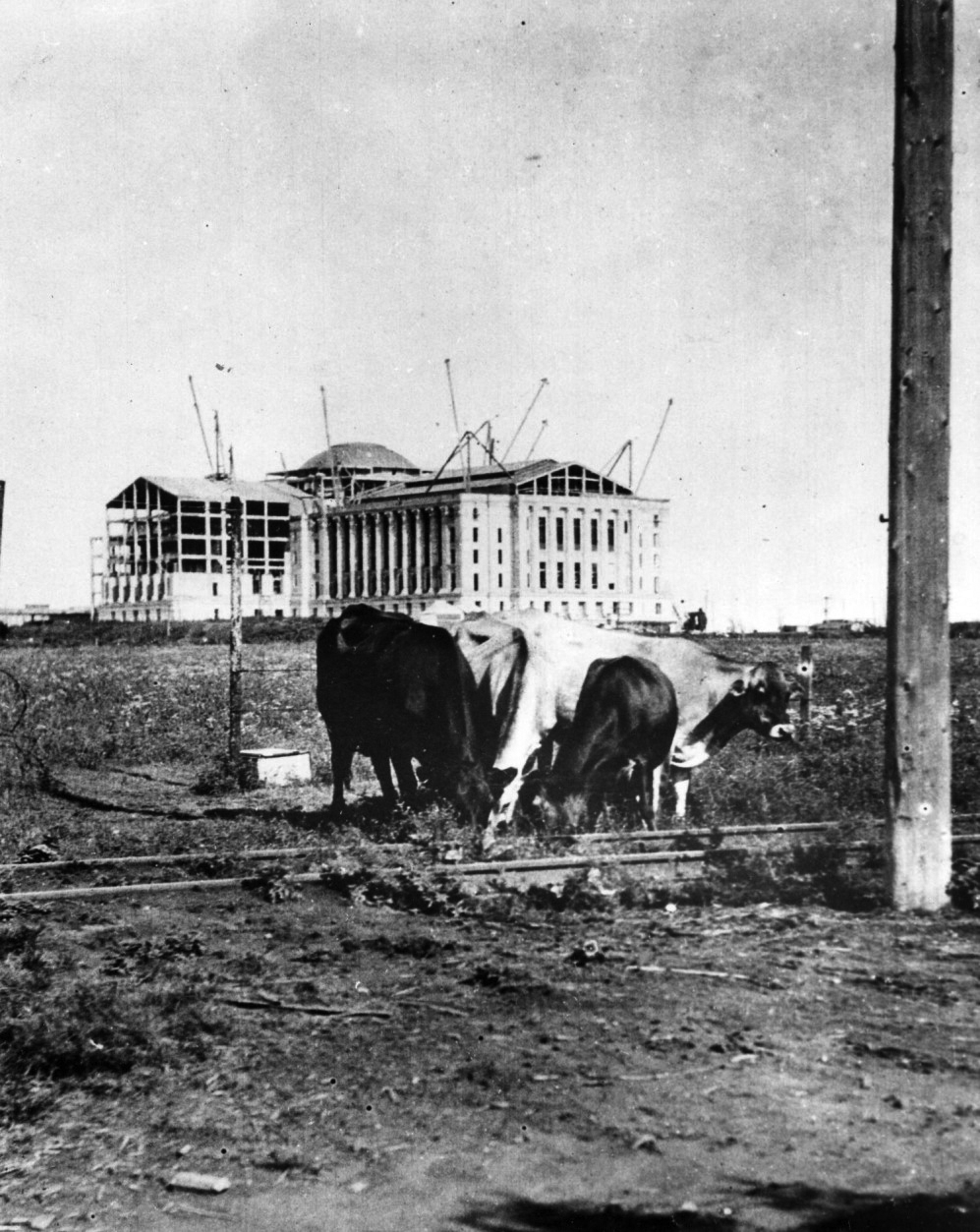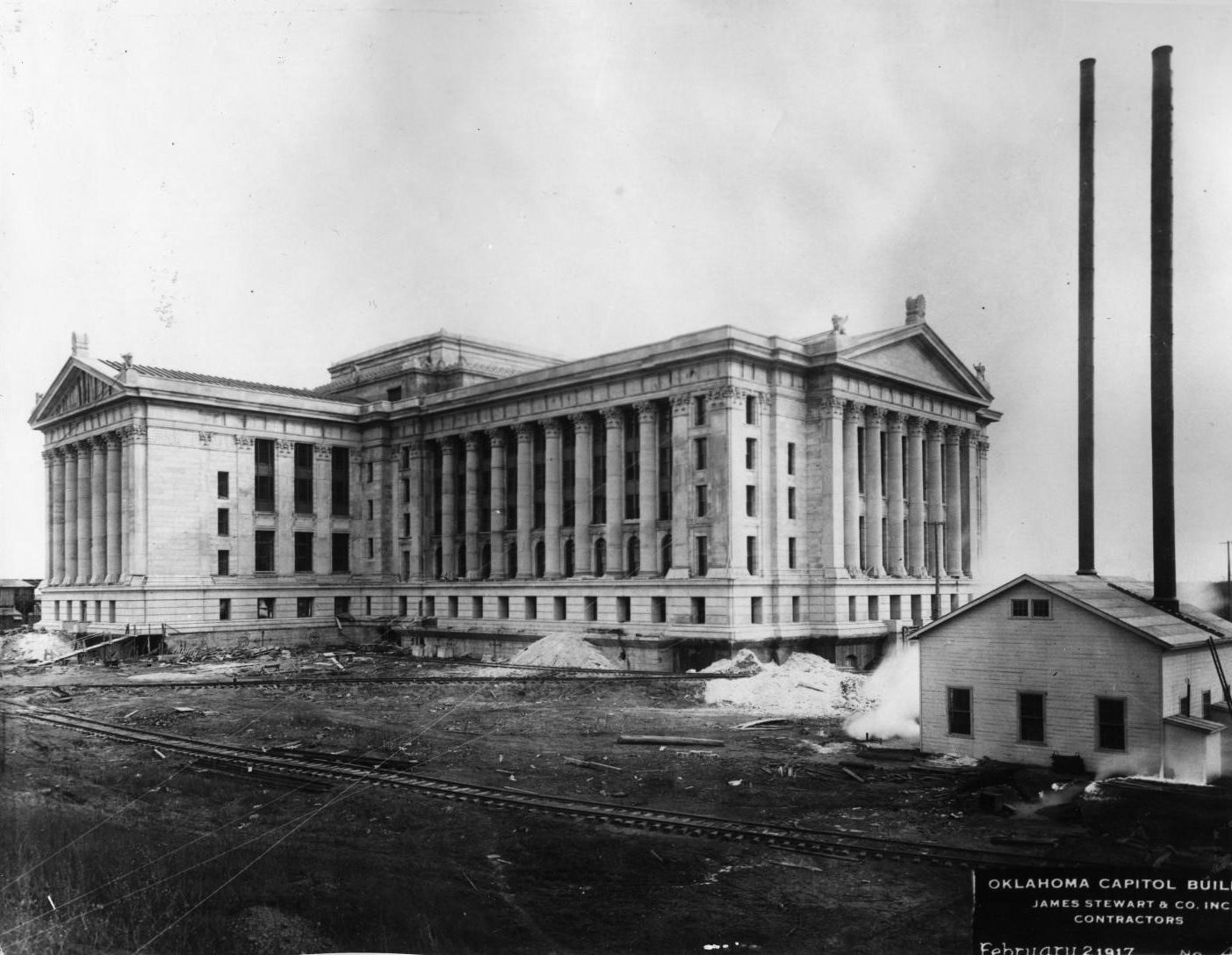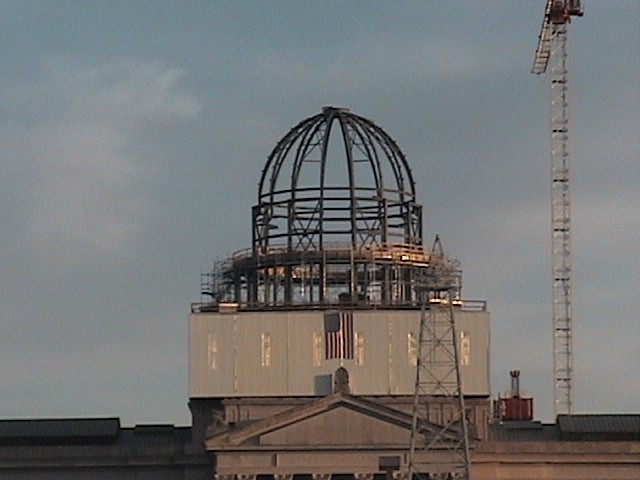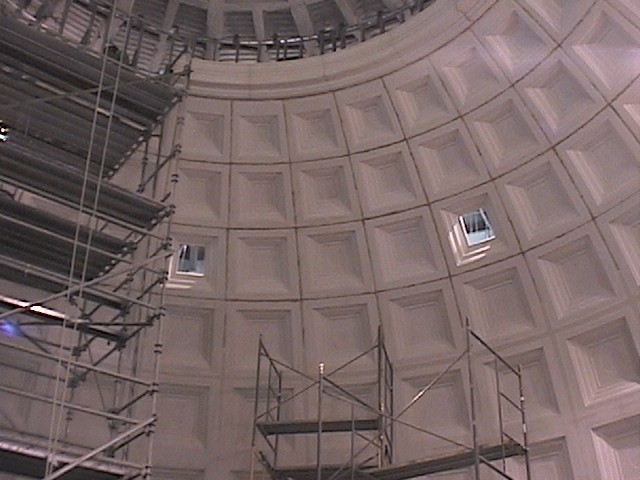
The Story of the Capitol
Construction
When the capital of Oklahoma was confirmed by the legislature, plans began for the Capitol building. On July 20, 1914, at 10 a.m., Governor Lee Cruce ceremoniously turned the Oklahoma earth, breaking ground for the Oklahoma State Capitol. With the ground broken, it was now time to construct the building.

Oklahomans come out to celebrate the groundbreaking ceremonies for the Oklahoma Capitol building, July 20, 1914 (21381, Oklahoma City Chamber of Commerce Collection, OHS).

Threshing crew of John Long working in front of the Capitol building under construction in 1916 (13041, W. P. Campbell Collection, OHS).

View from the Yellow Mule streetcar line owned by William Harn near the construction of the Oklahoma Capitol, 1916 (19442, Oklahoma Historical Society Photograph Collection, OHS).
After a search for an architect, the Oklahoma City architecture firm Layton and Smith were selected as designers and the James Stewart Company was selected to be builders. By 1914, the architect firm’s description of the building was submitted to the State Capitol Commission.
The State Capitol Commission was created to make sure Oklahoma was not losing money on the building due to bad planning. A federal construction engineer, Edward Boyd, led the commission in order to avoid local political pressure.
When the building was completed, it was a beauty to behold. It was a six-story structure in the grand Beaux Arts style. It had a concrete foundation with pink and gray granite quarried from Johnston County, Oklahoma, which is directly south of Oklahoma City.
The walls were Bedford limestone from Indiana and formed a t-shape with the northern and southern wings shortened with grand porticoes. In the middle is a square rotunda. The interior and exterior are highly decorated with a copper roof and stone eagles.

Ongoing construction of the Oklahoma Capitol, July 1, 1916 (18770.1.58, State Board of Public Affairs Collection, OHS).
Dome
The original architectural plans included a dome but when presented to the State Capitol Commission, it did not include a dome. However, the building was built to sustain a dome on the central, square rotunda. Years later, in 1998, the Oklahoma Centennial Act, created the Oklahoma Capitol Complex and the Centennial Commemoration Commission. This commission began to raise funds immediately for the $20.8 million dome.
The dome was started in 2001 and was dedicated in November 2002 with a special ornament. Instead of a symbol of freedom as the dome topper, such as an eagle, the builders of the dome choose something more specifically Oklahoman. The crowning element is called The Guardian and was designed by artist and State Senator Enoch Kelly Haney of Seminole. The statute itself is a combination of spiritual, material, and cultural characteristics of the thirty-nine tribes in Oklahoma. Oklahoma is the first state to have a capitol building featuring an American Indian sculpture on its dome. When it was installed on June 8, 2002, there were traditional tribal blessings and dances from American Indian chiefs from the Cheyenne-Arapaho and Cheyenne tribes.

Metal shell and base of the dome (OHS).

Inside of the dome with windows and tiling (OHS).

Setting The Guardian sculpture in place atop the Oklahoma Capitol (photo by D. Everett, Oklahoma Historical Society Publications Division, OHS).

